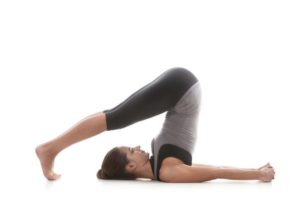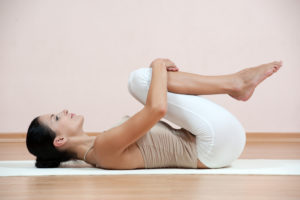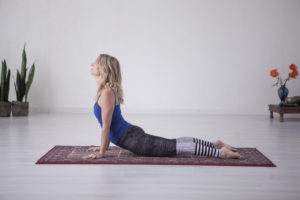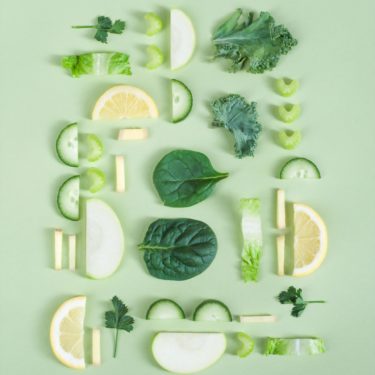Everyone can relate to feeling bloated from time-to-time. Poor diet, not properly chewing our food during rushed meals, lack of exercise, busy lifestyles, and stress all compromise the digestive system. For many of us, being bloated isn’t an occasional occurrence; it is a daily discomfort. Yoga is useful for connecting the breath and the body. By slowing down the mind and incorporating gentle movement, these Three Yoga Poses for Bloating help to relieve indigestion.
Three Yoga Poses for Bloating – Panasonic, Halasana, and Cobra Pose
Panasonic (Knees Hugged to Chest)
To do: Lie on your back with your legs long and toes pointed forward. Take an inhale and draw your knees in towards your chest, wrapping your arms around your shins. On an inhale allow your knees to gently rise off of your chest, and on an exhale contract deeper.
Benefits: Knees into the chest is nicknamed “wind removing” pose. This pose allows you to apply compression to your organs, which stimulates the release of gas in the digestive tract. Often, we can become bloated if we eat too quickly and take in air. To prevent this, aim to eat more slowly and in a relaxed state. However, in times where you do feel bloated, Apanasana is a fantastic option.
Halasana (Plow Pose)

Source: https://www.livestrong.com/article/483970-advantages-disadvantages-of-the-plough-pose-in-yoga/
To do: Start by lying flat on your back. Lift your legs and hips into the sky, rolling onto your shoulder blades for stability. Kick your feet up and over past your head. If necessary, bend the knees. Place the hands on the lower back for support. Hold for at least 20 seconds.
Benefits: Plow pose is an inversion. Inversions allow us to lift the hips higher than the shoulders, which can help relieve trapped gas. Stretching and stimulating the abdominal muscles in this shape helps to relieve constipation.
Cobra Pose
To do: Lie on your stomach and bring your hands by your waist. Activate the muscles in your thighs and firmly press the tops of the feet into the floor to avoid putting weight into the lower back. Gently press into the palms and lift the chest. If you have the mobility in your spine, straighten your arms all the way for full-cobra, but be sure to keep a slight bend in your elbows to avoid “locking” your joints.
Benefits: Cobra pose opens the airways in the diaphragm and neck. Often, when we are stressed, we do not take full, deep breaths. The prismatic nervous system, which produces the “rest and digest” response in the body, is compromised as a result of shallow breathing, leading to impaired digestion. Cobra pose helps to encourage deep breathing and the peristalsis of the intestines.






